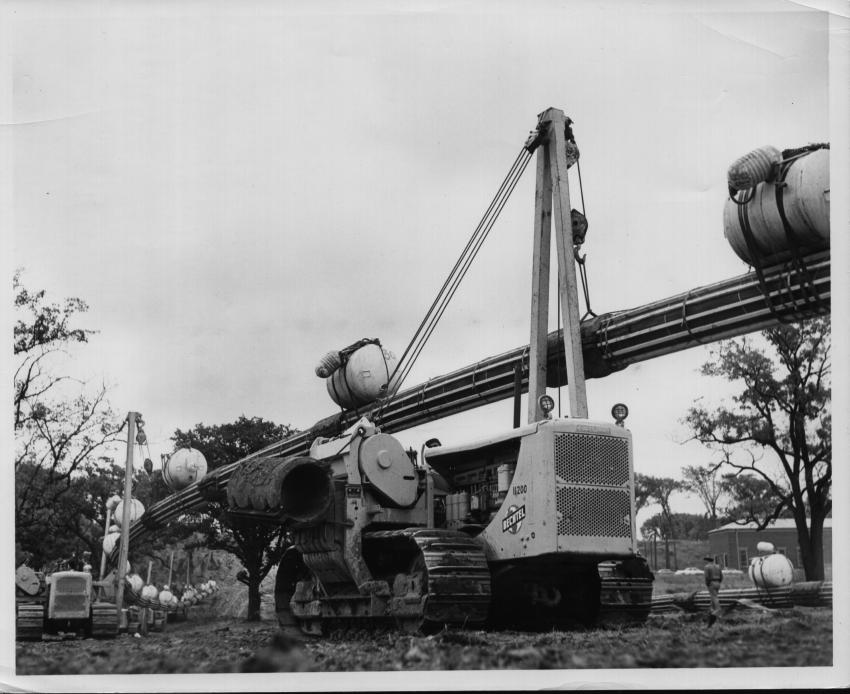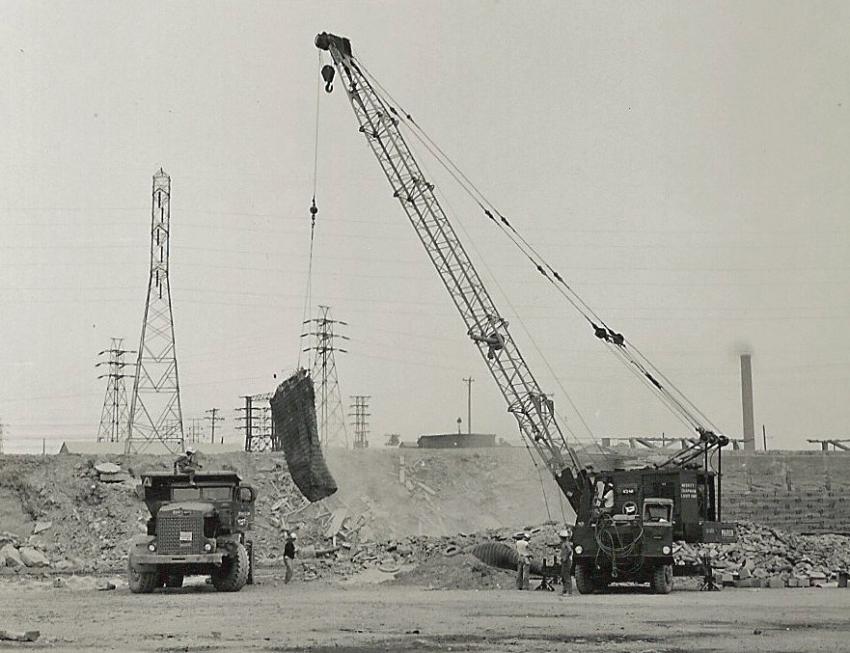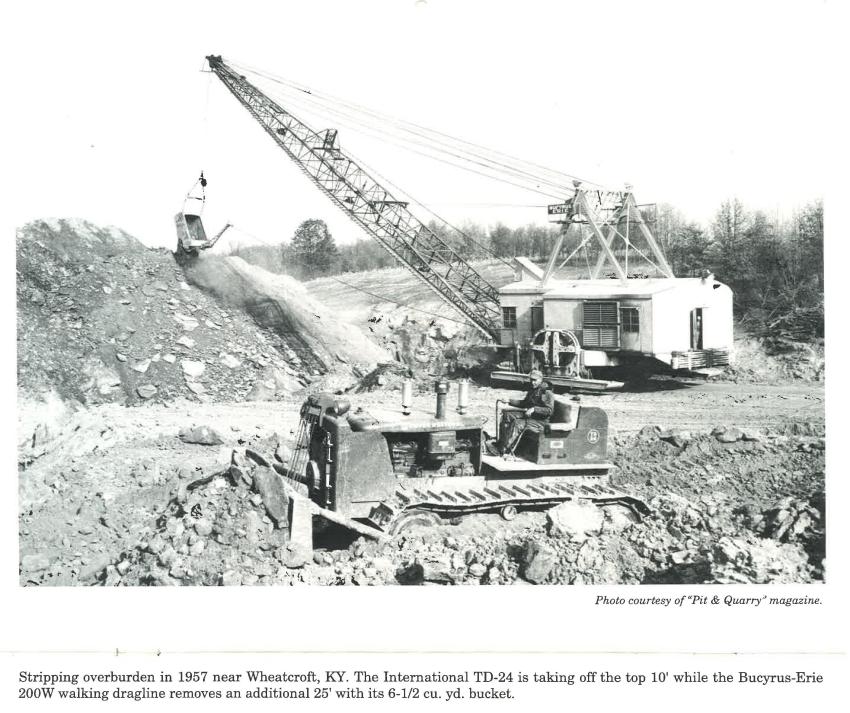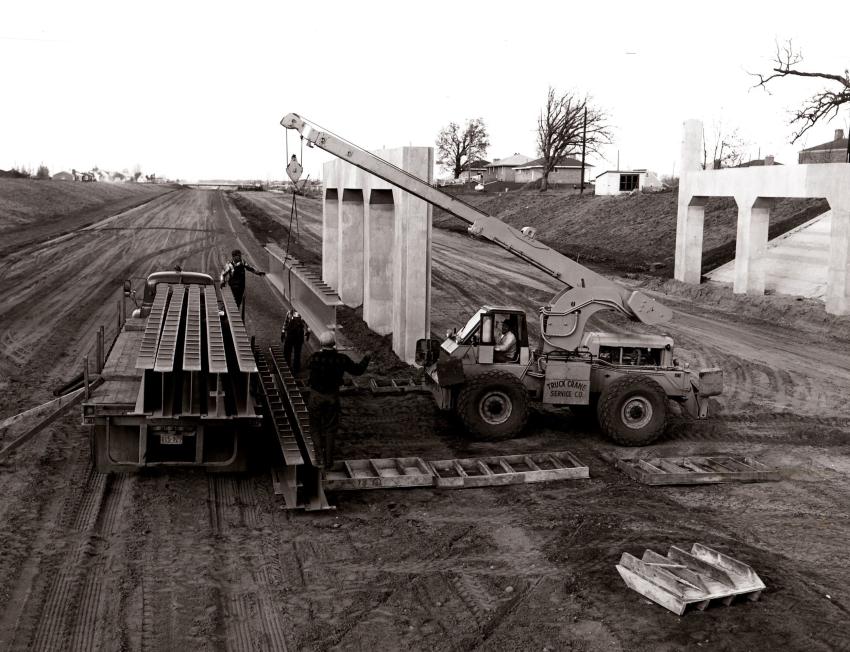Construction Equipment Guide takes a lookback at Cranes at work during the 1950's

Pipeline construction often required a host of pipelayers to place long sections of pipe. Eight Cat pipelayers are visible in this Sept. 11, 1954 scene as they hold a 600-ft. section of pipe. They will walk it to the edge of the Niagara River during construction of the first pipeline, a natural gas line for the Tennessee Gas Transmission Company, to cross the river.
(Dunbar & Sullivan Dredging Company collection, HCEA Archives) -

On August 15, 1959, sixty years ago, Merritt-Chapman & Scott is using a Marion 43-M truck crane to pick a blasting mat during construction of the Niagara Power Project. The hauler is one of some 120 R22 and R27 Euclids and PH95 Payhaulers M-C&S massed to handle nearly 17 million yds. of rock excavation on two contracts to construct the power plant, intake structure and two conduits. The mat is placed over a small blast to contain debris.
(Marion Power Shovel Company photo, HCEA Archives) -

Stripping overburden in 1957 near Wheatcroft, Ky., the International TD-24 is taking 10 ft.off the top while the Bucyrus-Erie 200W walking dragline removes an additional 25 ft. with its 6-1/2 cu. yd. bucket.
(Pit & Quarry Magazine photo, HCEA Archive) -

This dragline bucket is getting a lift into an Euclid end dump for a trip to the shop. An early Austin-Western crane does the honors in this shot taken in 1957 at Edward J. Petrillo I
(Austin-Western Road Machinery Company collection photo, HCEA Archives)
-

An Austin-Western hydraulic crane owned by Truck Crane Service Company unloads 32-ft., 1-ton bridge beams during construction of U.S. 65 near Minneapolis, Minn., in 1957. Austin-Western developed the first hydraulic crane, nicknamed the “Anteater,” for military service in World War II, and Grove Manufacturing perfected the industrial hydraulic crane in 1952.
(Austin-Western Division of Baldwin-Lima-Hamilton photo, HCEA Archives) -









